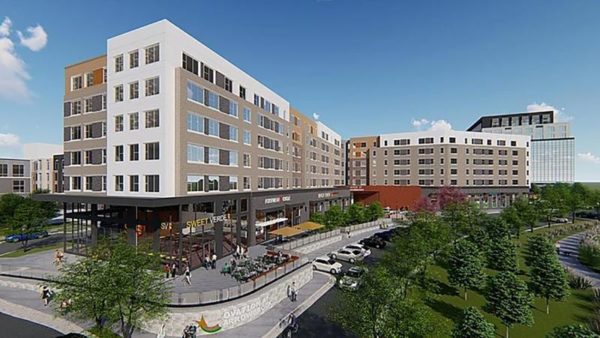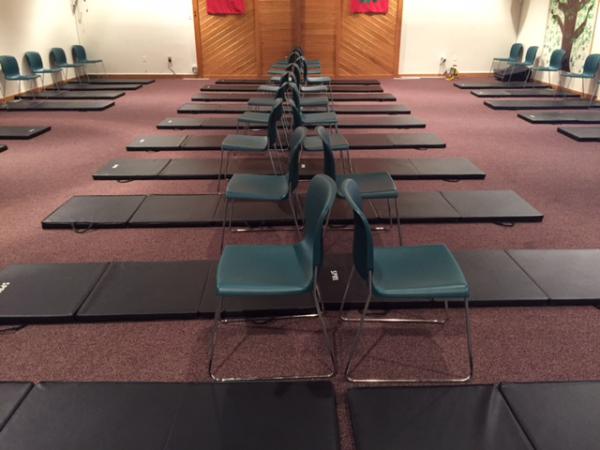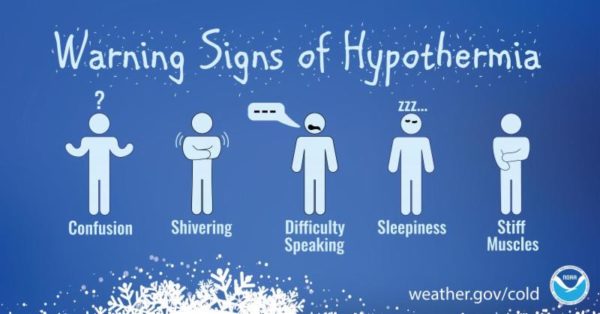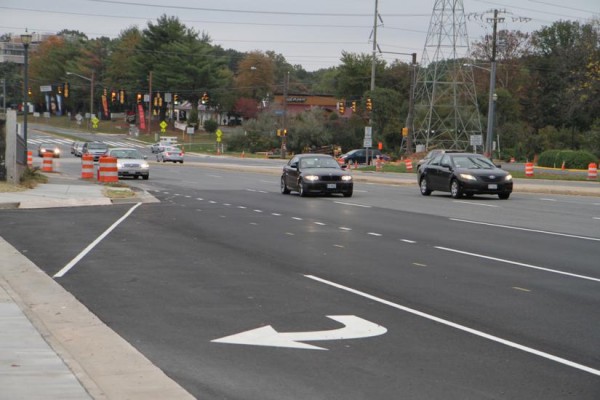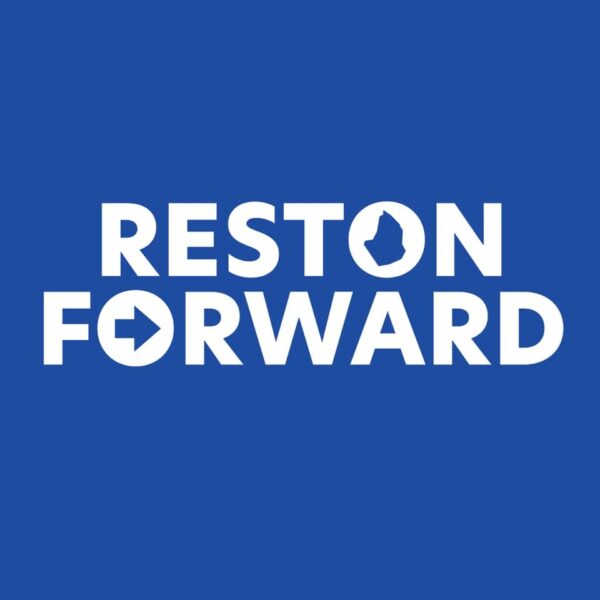 A new advocacy group in Reston has been formed in order to bridge what group members call the divide between “the Two Restons.”
A new advocacy group in Reston has been formed in order to bridge what group members call the divide between “the Two Restons.”
Reston Forward announced its formation earlier this week. The 50-member group aims to ensure that Bob Simon’s founding principles are accessible to all Restonians.
Shane Ziegler, founder and CEO of the organization, said he and a group of friends were inspired to do more for Reston.
“Decisions are being made now in Reston by our leaders and stakeholders that will impact our community for generations to come,” Ziegler, who moved to Reston in 2020 said. “I am hopeful that Reston Forward will serve as a platform to make sure that all voices are heard.”
Here’s how the organization describes itself:
Reston Forward is a membership-driven advocacy organization that believes in a Reston that lives up to its founding principles and values for future generations by engaging residents of all ages and areas in decisions impacting the future of the community.
Zielger says that while he is new to Reston — he moved to Reston two years ago — many Restonians want to connect with other stakeholders in the community, but simply do not know how to do so.
“We want to provide a platform to encourage and guide these people to have a voice and serve Reston,” he said.
Reston Forward plans to host a podcast with community leaders in order to provide a hub of information on Reston.
So far, the organization has around 50 members. Organizers say that the membership represents a diverse mix of ages, regions of the community and lengths of residency in the community.
“We have members from the age of 22-60 representing mid-career professionals, entrepreneurs and retirees from all corners of Reston,” he said.
Image via Reston Forward/Facebook
 This is an opinion column by Del. Ken Plum (D), who represents Reston in Virginia’s House of Delegates. It does not reflect the opinion of Reston Now.
This is an opinion column by Del. Ken Plum (D), who represents Reston in Virginia’s House of Delegates. It does not reflect the opinion of Reston Now.
Fewer Virginians can afford to buy a home, and there is a shortage of at least 200,000 affordable rental units according to the results of a study by the staff of the Joint Legislative Audit & Review Commission (JLARC) released earlier this week. Much of the material in this column is taken directly from the report which is available to the public at jlarc.virginia.gov. The study was undertaken at the direction of the legislative members of JLARC including myself as chairman and Senator Janet Howell as vice chairman to give basic information to the General Assembly for its legislative action as needed.
As expected, Virginians most affected by the lack of affordable housing are renters who have low income. Households are considered housing-cost burdened when they spend more than 30 percent of their income on housing expenses. Approximately 29 percent of Virginia households (905,000) were housing-cost burdened in 2019, and nearly half of these households spent more than 50 percent of their income on housing putting Virginia near the middle of states in terms of the percentage of households that are cost burdened.
Not surprisingly, the study found that households that rent their homes are more likely to be cost burdened than households that own their homes. Approximately 44 percent of renting households are cost burdened compared with 21 percent of owning households. The majority (67 percent) of cost burdened households live in the state’s so called “Golden Crescent” of Hampton Roads, Northern Virginia, and Central Virginia.
There is a relationship between housing-cost burdened individuals and their occupations, many of which are in high demand. Examples include home health aides ($22,000 salary), teaching assistants ($29,000 salary), and social workers ($51,000 salary) who are needed in all parts of the state, and a lack of affordable housing in some regions constrains the supply.
The JLARC report states that the median home sales price in Virginia has risen 28 percent over the past four years to $270,000 in 2021. The percentage of all Virginia homes that sold for $200,000 or less decreased by 40 percent since 2019. In addition to the rising cost of homes are the upfront costs required to purchase a home. Renting a home is an obvious alternative to home purchasing, but the shortage of 200,000 affordable rental units adds to the problem. The shortage of affordable rental units in Fairfax County alone is estimated to be 80,000.
Possible solutions to the not-so-affordable housing in Virginia suggested by JLARC for state legislative action include a greater contribution to the state’s funding for affordable housing of both new affordable multi-family housing and rental housing. The state needs to provide better assistance with upfront mortgage costs. Local zoning affects the affordable housing supply and needs to be examined and revised. Virginia needs to give additional localities the authority to require developers to set aside a portion of units to rent or sell below market price.
There is no place like home for the holidays–or for any time of the year. There is a responsibility that government respond to the need for affordable housing.
The Fairfax County Board of Supervisors is aiming to formally update its Workforce Dwelling Unit (WDU) policy to provide affordable rents for those in need as rents continue to increase across the region.
However, these policy changes would not apply to Reston, which is currently undergoing its own separate study to update its WDU policy. The proposal heads to the board for a public hearing and a vote today.
The main update is lowering the household income levels served under the county’s rental WDU program from a maximum of 120% of the Area Median Income (AMI) in the Washington D.C. Metro Area to 80% of AMI. It also now includes those at 70% and 60% of AMI in the program. The changes are based on a comprehensive staff report released last month.
The area median income (AMI) is the household income for the median household in a region. Currently, in the D.C. region, the AMI is $126,000 for a household of four.
“We conducted a housing strategic plan process over the last two or three years, which identified, sort of these lower incomes as being in the greatest need,” says Tom Fleetwood, Director of Fairfax County Housing and Development. “While at the same time, the higher income tiers that were served under the original version of the WDU program really were closer to the prevailing market rents here in Fairfax County.”
The updates would also lower the minimum percentage of rental units offered as WDUs from 12% to 8%. According to the plan, 4% of those units would need to be offered to those at 80% AMI, 2% to those at 70% AMI, and 2% to those at 60% AMI.
However, these numbers are different and are specifically revised for the Tysons Urban Center.
Fleetwood says the policy is “similar in intent” but the specific numbers are more in context with the realities of Tysons’ rental market.
In Tysons, developers would have the ability to choose between two different options for their affordable rental units. Either they can offer 2% of the units at 60% AMI, 3% at 70% AMI, and 8% at 80% AMI, which brings their WDU commitment to 13% in total, or they can simply offer 10% of their units at 60% of AMI.
The county’s planning commission voted unanimously to make these changes.
Reston is working on their own separate WDU study as part of the Reston Comprehensive Plan Study. That study is being initiated by a task force led by Hunter Mill District Supervisor Walter Alcorn.
Alcorn’s communication director Lisa Connors, tells Reston Now that Reston has a “separate formula for WDUs.” Similar to the policy updates that the county is voting on, WDUs will be discussed at the study’s task force meeting on March 8.
Affordable housing continues to be a challenge for Reston.
The Board of Supervisors is also voting to update, revise, and rewrite editorial elements of the policy that was first established in 2015. The revisions would update data, rework outdated terminology, and remove references to programs that no longer exist.
Photo by Mike Reyes/Flickr
A 274-unit affordable housing building near the Innovation Center Metro Station is officially one step closer to groundbreaking.
Real estate development firm SCG Development, the county, and the Fairfax County Redevelopment and Housing Authority closed on financing for the project, known as Ovation at Arrowbrook. The building brings 274 affordable apartments to the Arrowbrook mixed-use development, which is located at the intersection of Centreville Road and Arrowbrook Centre Drive in Herndon.
In a statement, Dranesville District Supervisor John Foust said noted that the Northern Virginia market is struggling to offer affordable options for stable and safe homes.
“The Ovation at Arrowbrook represents a huge leap forward by providing many of these hard-working households the opportunity to establish roots, raise their families, and benefit from all the advantages that life in Fairfax County affords.”
A combination of local Housing Blueprint funds, project-based vouchers, and revenue bonds were used to finance the project.
“The financing component of the Arrowbrook development not only reflects the significance of our commitment to the development of affordable housing throughout Fairfax County, but it is an exceptional showcase of several of the tools we have to bring these developments a reality,” said newly elected FCRHA chair, Melissa McKenna.
The apartments serve housings earning between 30 and 60 percent of the area median income and will remain designated as affordable for a minimum of 50 years. The development includes 55 three-bedroom units and 15 handicap accessible units.
It will be located next to Arrowbrook Center Park, a for-sale townhome and condominium community that will be developed by Pulte. A high-rise building that will house a hotel, offices, and condominiums is also planned on the site. Roughly 36,000 square feet of retail is also planned.
Construction on Ovation will begin next month and completion is expected to take place by the end of 2022.
Photo via Fairfax County Government
It has barely been 10 days since Fairfax County launched its annual Hypothermia Prevention Program, and it’s already clear that this winter will be unlike any other that Abby Dunner has experienced in her nearly decade-long work with the initiative.
Now the manager of the Fairfax County Office to Prevent and End Homelessness, Dunner has been involved with the hypothermia prevention program since she was employed as a case manager and assistant by the nonprofit FACETS in 2012.
The COVID-19 pandemic, however, forced Dunner and the other county and nonprofit officials who run the program to completely reengineer their operations, which were well-honed after 15 years of providing shelter for people in need during the coldest months of the year.
This year’s hypothermia prevention program, which started on Dec. 1 and runs through Apr. 1, 2021, must contend not only with the public health risks and social distancing protocols created by COVID-19, but also the looming threat of a surge in homelessness if emergency assistance measures end.
“We recognize the challenges and kind of the unique situation that we’re in, but everybody is also very much on board with understanding that the program has to continue,” Dunner said. “We have to still be able to shelter people who are experiencing homelessness.”
County officials and the nonprofit contractors that operate the hypothermia prevention shelters realized early on that they would have to make major changes to the program to make it viable this year.
Dunner says the Office to Prevent and End Homelessness collaborated extensively with the Fairfax County Health Department throughout the planning process. Health officials walked through each site and recommended ways to implement social distancing as much as possible.
Typically, the county relies on faith communities and nonprofits to host the actual shelters, which rotate between different locations every week, but the churches and other buildings usually utilized were too small to allow for the approximately 100 square feet of space sought per guest.
This time, the county turned to its own facilities, ultimately identifying seven sites that were sufficiently spacious, centrally located, and accessible by public transportation.
Dunner says the hypothermia prevention program generally serves about 1,200 people across its four months of operation, and roughly 215 people utilize the shelters each night.
Though only a handful of people stayed at the Container Store site for the first couple of nights, the shelter averaged about 26 guests over the program’s first seven days, reaching 40 people on Dec. 7 with numbers expected to continue rising, according to Dykes.
Individuals are given 100 square-foot spaces marked off by tape, and they are required to wear masks except when eating and sleeping in their space.
Shelter staff, who also must wear face coverings, administer temperature checks and wellness questionnaires when guests arrive. If someone records a high temperature or reports COVID-19 symptoms, they are directed to one of the Quarantine, Protection, Isolation and Decompression sites that Fairfax County has set up in local hotels, where they can be monitored and tested.
As of Dec. 9, the county has 445 rooms at six hotels for QPID shelter. 360 of them are occupied by 477 guests, only seven of whom were not experiencing homelessness upon admission, Fairfax County Health and Human Services reported.
In addition to housing people who are unable to isolate or quarantine safely in their own home, the QPID rooms could serve as overflow shelter if the county’s emergency shelters and hypothermia prevention sites run out of capacity.
FACETS Senior Director of Programs Carole Huell says Fairfax County could also revisit sites that were previously considered for the hypothermia prevention program, but a second location would require hiring more staff, something that was already a challenge.
The volunteers that the program normally relies on to staff the shelters are not involved this year, since they tend to be older and, therefore, at higher risk of contracting COVID-19 if exposed.
“There is a back-up plan [if shelters exceed capacity],” Huell said. “It’s just we hope we don’t have to get to that, because each agency that needs additional space for a facility will have to man that space, and that’s additional resources and funding necessary.”
According to Dunner, Fairfax County is already seeing evidence of the pandemic’s economic fallout, as new people enter an increasingly strained social safety system that had glaring deficiencies even before a deadly contagion entered the picture.
Dunner says the county is “very concerned” about the ripple effects of the U.S. Centers for Disease Control and Prevention’s eviction moratorium ending on Dec. 31, but even with the ban in place, evictions have not wholly stopped.
Still, both county and nonprofit workers believe they have prepared adequately for the season. They have also gotten support from partners in various faith communities, who are contributing food, clothing, and other donations in lieu of being able to serve as hosts and volunteers.
“We’re hoping that, based on the spaces that we’ve chosen and the way that we planned the program, we’ll be able to accommodate anyone who’s in need of shelter,” Dunner said.
Image via Fairfax County Office to Prevent and End Homelessness
 Rotary Club of Reston is soliciting donations ahead of its event to make thousands of meals for families in need.
Rotary Club of Reston is soliciting donations ahead of its event to make thousands of meals for families in need.
The Reston Rotary Foundation, the fundraising and grants-making part of the Reston Rotary Club, students from South Lakes High Scool plan to pack 10,000 meals on Saturday (Jan. 11) that will get distributed in schools in poverty-stricken areas across the globe, according to a press release.
The service event through Anython will be done in partnership with Rise Against Hunger, an international hunger relief organization.
People can donate $1, $2, $5 or more to support the event.
“Initial donations made will support the efforts of the Reston Rotary Foundation’s kick-off event, and when the $10,000 goal has been met to fund the Rise Against Hunger program, additional funds will be used be support the Foundation’s ongoing community efforts,” the press release said.
The community efforts include:
- Aldrin Elementary’s Band of Brothers program
- scholarships for South Lakes High School students
- support for Reston Community Orchestra’s youth programming
- Operation Warm
Volunteers are also needed for the January event.
Photo via Rotary Club of Reston/Facebook
County staff are exploring ways to curb panhandling by prohibiting pedestrians from engaging with cars on medians or intersections. The Fairfax County Board of Supervisors directed staff to create a draft ordinance that would limit curb to curb interactions between drivers and pedestrians on Tuesday (July 16).
Springfield District Supervisor Pat Herrity and Braddock District Supervisor John Cook proposed the board matter in response to reports of increased panhandling in the last two years, including several areas in Reston.
In 2017, the Fairfax County Police Department received more than 2,100 calls related to panhandling, including issues related to safety, fear of suspicious people and traffic issues.
“It is unsafe and detracts from our neighborhoods,” Braddock District Supervisor John Cook, the proposal’s co-sponsor, said in a news release. “We have good programs in this county and many nonprofit groups who help the homeless, and that is a better way to help.”
Here’s more from the proposal by Herrity and Cook:
In the past two years, there has been a noticeable increase in panhandling on medians and intersections throughout the County. While there are some who panhandle because they need to, many more take advantage of the generosity of our residents through panhandling rings. Investigation into these rings has proven that many panhandlers in our County are coming from outside the County and even outside of the state, attracted by the wealth and generosity of our residents.
The Board has sought to help those panhandlers in need by committing a significant portion of the County budget to providing services for those residents who are down on their luck. The Board has encouraged residents to direct panhandlers to these County resources including shelters, food banks, health and job matching services, instead of giving small amounts of money. It is vitally important that we connect those in need with the right services and disincentivize panhandling.
Asking for money is a protected First Amendment right. In public areas, seeking money does not violate any laws.
FCPD encourages residents to report concerns about panhandlers who may have committed traffic offenses or be in involved in criminal activity to police.
The board will consider the proposal at the Public Safety Committee’s meeting on Sept. 17.
It’s unclear how the proposed policy will maintain protected speech.
To what extent do you think panhandling is a problem in Reston and Herndon? Let us know in the comments below.
File photo
 This is an opinion column by Del. Ken Plum (D), who represents Reston in Virginia’s House of Delegates. It does not reflect the opinion of Reston Now.
This is an opinion column by Del. Ken Plum (D), who represents Reston in Virginia’s House of Delegates. It does not reflect the opinion of Reston Now.
Following the daily news coming out of our Nation’s Capital is enough to leave anyone despondent. The backing away from long-sought freedoms against discrimination and oppression to a seeming lack of concern about the health of our planet and its people to a rise in hateful speech and behavior punctuated by the concentration of wealth in the hands of a few at the expense of the many contribute to the feeling of desperation on the part of many who share values very different than those holding positions of power today. Add to the very real concerns about the direction of our country the plight of millions around the world and one can become very depressed.
I remind myself regularly that it is important to remember that behind all the dark clouds there is a sunny side. While my examples of the sunny side will be from our community over the last couple of days, the sunshine of care and compassion shines in different ways and intensities throughout the world every day We sometimes have to clean the lenses through which we view our community and the world to gain a clearer perspective of where we are and where we are headed.
Just last weekend Jane and I spent an evening with the caring and compassionate people in our community who raise money and work through FISH (Friendly, Immediate, Sympathetic Help) to help those who are down on their luck pay their utility bills and rent, fill prescriptions, and learn to manage their finances. A golf tournament this week with Kids R First along with the volunteer help of many will provide funding to ensure that thousands of children in our region start school with book bags filled with needed school supplies. Students in South Lakes High School (SLHS) who do not have enough to eat at their homes can get food through the SLHS Food Pantry on school days and for the weekends.
Days in a homeless shelter can no doubt seem bleak despite the best efforts of volunteers to make them seem otherwise, but nothing can replace the burst of sunshine that comes from Cornerstones and all its supporters who work mightily to end homelessness in our community. I spent an evening recently with the volunteers of Britepaths who are doing the same kind of work in other areas of our region bringing hope to many.
I spend time monthly with volunteers from Moms Demand Action, Brady Campaign, and other groups working to end gun violence. Their commonsense approach to the public health crisis of gun violence will pay off. I continue to be impressed with the determination and hard work of the Herndon-Reston Indivisibles who are devoted to the election of caring candidates to office and to bring focus on bad public policies.
I am honored to be in public office to observe and participate in the hard work of citizens who bring sunshine where it is needed. I have listed just a few examples. Join with us and pull back the shades to let the sunshine in. Let me know at [email protected] if you are looking for ways to become involved.
File photo
Cornerstones, a nonprofit organization that helps individuals overcome tough economic times, is hosting a forum on affordable housing next month for candidates running for the Hunter Mill District Supervisor seat
The event, which takes place on Monday, May 13 from 7-9 p.m. at Heritage Fellowship Church (2501 Fox Mill Road), was organized in response to the “housing affordability crisis” in Fairfax County, according to Cornerstones. More than 44 percent of renters and 22 percent of homeowners spend more than 30 percent of their income on housing, according to the county’s strategic plan.
Candidates for the Hunter Mill District Supervisor seat will answer questions about affordable housing and economic development in Fairfax County from a panel of businesses and community leaders. A meet and greet reception will follow the question-and-answer period at 8:30 p.m.
Rev. Debra Haffner of the Unitarian Universalist Church in Reston will moderate the event. The forum is free and open to all, but attendees should register online. Hunter Mill District residents can submit questions about affordable housing to [email protected]. Questions will be selected prior to the event.
The Hunter Mill District Supervisor election is set for June 11.
Photo by Reston Association



